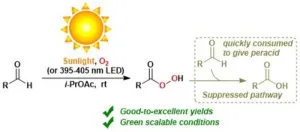Through the Strong Heart Family Study, National Institutes of Health-supported researchers found that small declines in blood lead levelswere associated with long-term cardiovascular health improvements in American Indian adults. Participants who had the greatest reductions in blood lead levels saw their systolic blood pressure fall by about 7 mm Hg, an amount comparable to the effects of blood pressure-lowering medication.
The findings as reported from researchers at Columbia University Mailman School of Public Health and NIEHS and NHLBI are published in the Journal of the American Heart Association.
“This is a huge win for public health,” said Anne E. Nigra, PhD, assistant professor of environmental health sciences at Columbia Mailman School of Public Health, and senior author. “We saw that even small decreases in a person’s blood lead levels can have meaningful health outcomes.”
Nigra and her co- authors, including Wil Lieberman-Cribbin, MPH, also at Columbia Mailman School, credit these improvements in large part to public health and policy changes that have occurred over the last few decades.
In addition to seeing improvements in systolic blood pressure, the investigators found that reductions in blood lead levels were associated with reductions in a marker associated with hypertrophic cardiomyopathy and heart failure.
To conduct this research, investigators partnered with 285 American Indian adults through an extension of the Strong Heart Study, the largest study following cardiovascular health outcomes and risk factors among American Indian adults. Participants lived in one of four tribal communities in Arizona, Oklahoma, North Dakota, or South Dakota.
The researchers looked at blood lead levels and blood pressure readings over time. Lead was first measured in blood collected during the 1997-1999 study visit and again in blood collected during a follow-up visit between 2006-2009. During this time, participants had their blood pressure taken and participated in medical exams, including having echocardiographs to assess their heart’s structure and function. To support similar comparisons among participants, researchers controlled for multiple factors, including social variables, cardiovascular disease risks, and medical history.
At the start of the study, the average blood lead level was 2.04 µg/dL. Throughout the study, the average blood lead level fell by 0.67 µg/dL, or 33 percent. The most significant changes, categorized by participants with average starting blood lead levels of 3.21 µg/dL and who experienced reductions of about 1.78 µg/dL, or 55 percent, were linked to a 7 mm Hg reduction in systolic blood pressure.
“This is a sign that whatever is happening in these communities to reduce blood lead levels is working,” said Mona Puggal, MPH, an epidemiologist in the Division of Cardiovascular Sciences at the National Heart, Lung, and Blood Institute (NHLBI). “The reductions in blood pressure are also comparable to improvements you would see with lifestyle changes, such as getting 30 minutes of daily exercise, reducing salt intake, or losing weight.”
The reductions in blood lead levels observed in the study are similar to those seen in the general U.S. population following policies and efforts implemented within the past 50 years to reduce lead exposure through paint, gasoline, water, plumbing, and canned items.
“Recognizing that American Indian communities are disproportionately exposed to elevated levels of lead and other metals compared to the general U.S. population, more research needs to be done to determine how environmental agents exacerbate cardiovascular and other diseases, and more needs to be done to improve the environmental health of American Indians,” said Lindsey A. Martin, PhD, a health science administrator at the National Institute of Environmental Health Sciences (NIHES).
The researchers point out that it is also important to investigate these findings in other communities and to look for additional ways to reduce lead exposure, especially in other populations with elevated risks for exposure and cardiovascular disease.
Co-authors are: Zheng Li, Michael Lewin, Patricia Ruiz, Agency for Toxic Substances and Disease Registry; Jeffery M. Jarrett, Centers for Disease Control and Prevention; Shelley A. Cole, Marcia O’Leary, Texas Biomedical Research Institute; Gernot Pichler, Clinic Floridsdorf, Vienna; Daichi Shimbo, Columbia University Irving Medical Center; Richard B. Devereux, Weill Cornell Medical College; Jason G. Umans, MedStar Health Research Institute and Georgetown-Howard Universities Center for Clinical and Translational Science; and Allison Kupsco and Ana Navas-Acien, Columbia Mailman School of Public Health.
The research was funded by NIEHS and NHLBI.
Study: The Contribution of Declines in Blood Lead Levels to Reductions in Blood Pressure Levels: Longitudinal Evidence in the Strong Heart Family Study. J Am Heart Assoc. 2024; doi: 10.1161/JAHA.123.031256.
Columbia University Mailman School of Public Health
Founded in 1922, the Columbia University Mailman School of Public Health pursues an agenda of research, education, and service to address the critical and complex public health issues affecting New Yorkers, the nation and the world. The Columbia Mailman School is the fourth largest recipient of NIH grants among schools of public health. Its nearly 300 multi-disciplinary faculty members work in more than 100 countries around the world, addressing such issues as preventing infectious and chronic diseases, environmental health, maternal and child health, health policy, climate change and health, and public health preparedness. It is a leader in public health education with more than 1,300 graduate students from 55 nations pursuing a variety of master’s and doctoral degree programs. The Columbia Mailman School is also home to numerous world-renowned research centers, including ICAP and the Center for Infection and Immunity. For more information, please visit www.mailman.columbia.edu.
END







